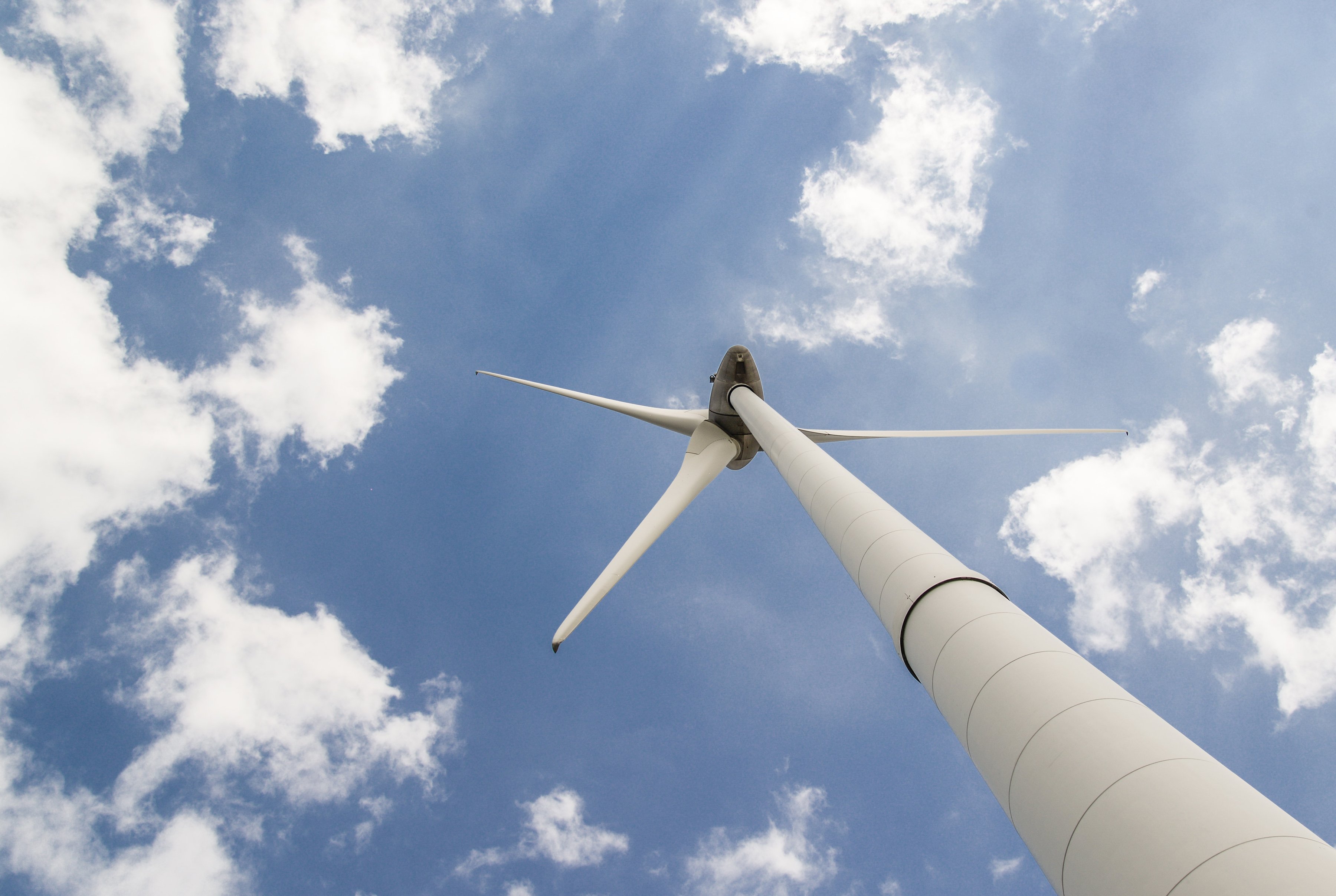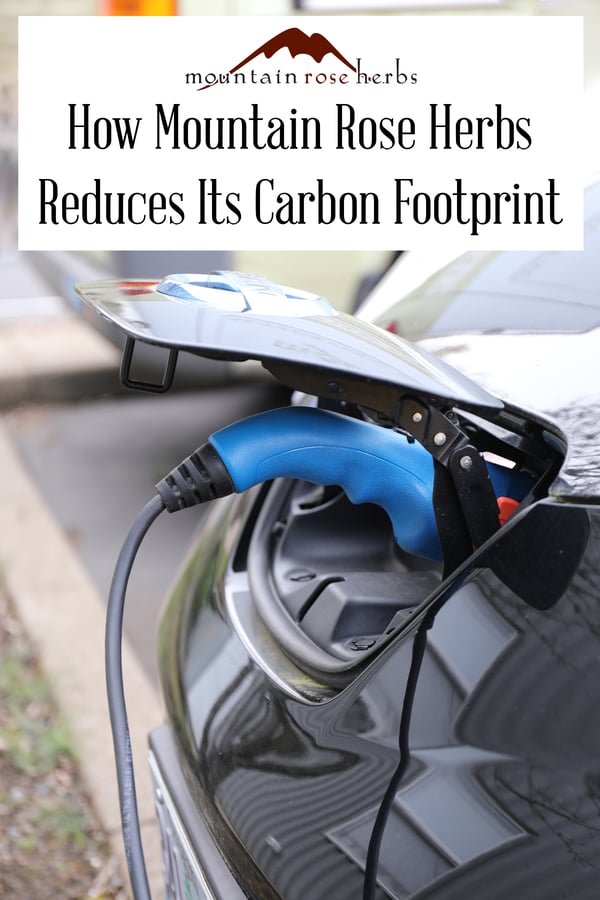From charging our phones to switching on the kettle for our morning tea, using energy often seems like an inevitable part of life these days. However, understanding and accepting this fact doesn't mean we can't take responsibility for the energy and fuel we use. Whatever your motivation, be it saving money or reducing your environmental impact, it can feel overwhelming to tackle a big goal like curtailing energy consumption. But there are ways to reduce your impact, either as an individual or as a business like Mountain Rose Herbs. Additionally, even though energy use is sometimes unavoidable, there are ways to offset the carbon emissions from that power production to help balance the scales.
Reducing Our Energy Consumption
Let’s start with the low hanging fruit—using less energy where we can.
Mountain Rose Herbs uses the EPA Energy Star Portfolio Manager to help us track energy, water, and carbon emissions, which we report each year in our annual Sustainability Report. The Portfolio Manager is an online tool that 40% of U.S. commercial buildings employ to measure and monitor environmental performance. We’re proud that all our facilities are Energy Star compliant. We've made it a policy to turn off lights, appliances, and electronics when not in use. Power strips can help turn off multiple items at once, and light sensors and timers can automate some of the work.
We’re lucky that Mountain Rose Herbs’ primary facility in Eugene, Oregon was constructed in accordance with LEED (Leadership in Energy and Environmental Design) standards and relies heavily on natural lighting. Additionally, we upgraded to LED light bulbs in all our facilities and installed an Energy Star-rated heating and cooling system at our main campus. With the opening our new local milling facility, we have dramatically reduced the fuel and energy expenditures associated with moving our products to different locations for processing.
Where possible, we work to reduce what we draw from the grid by creating our own energy on-site. At our main building and our retail store, we have solar panels on the roof. We also partner with our local utility’s Greenpower program to fund renewable energy projects, our goal being to help shift what powers our communities to sources that work with, rather than against, our natural environment.
The Great Light Bulb Swap of 2020
Lighting offers a huge opportunity to reduce daily energy use, which is why our dedicated Facilities team has taken on the lofty goal of replacing all of our lighting fixtures with efficient LEDs by mid-2020. Over three months, they will remove 1459 fixtures and approximately 1400 ballasts, replacing them with 340 fixtures and approximately 1200 LED lamps. Retired fixtures will be sustainably disposed of through our local county hazmat program, where the toxins from the fluorescent tubes are captured before destruction and the glass is reclaimed and recycled. Old steel fixtures will also be recycled.
This project is no small undertaking, but the rewards are significant, with an estimated savings of 221,788 kWh per year—that's an annual savings of 64% of our lighting energy usage, or $18,225! Add to that an additional yearly savings of $4,300 in labor and materials avoided by not having to replace bulbs, plus a substantial rebate from our local utility's Energy Smart program, and lighting upgrades start to sound like a bright idea indeed (all factors to consider when proposing a similar energy-saving measure at your own workplace!).
Offsetting Our Environmental Impacts
In spite of all our energy conservation efforts, we, like virtually all modern businesses, still use energy and produce carbon emissions. In support of our commitment to making our impact on the world a positive one, in 2008, we began measuring our unavoidable emissions and invested in offsetting them.
So, what does it mean to offset carbon emissions? Once you know how much energy you’re using, you can plug in that information to one of many online tools to calculate the associated greenhouse gas (GHG) emissions, often called the “carbon footprint.” From there, an organization can invest in projects that work to neutralize the negative effects of these greenhouse gasses on the environment. Usually, this involves funding alternative energy projects that prevent new GHG emissions from being released or supporting carbon sequestration projects that remove GHG emissions from the atmosphere.
Mountain Rose Herbs partners with NativeEnergy to offset our unavoidable carbon emissions. NativeEnergy is a B Corporation certified by the nonprofit B Lab to meet rigorous standards of social and environmental performance, accountability, and transparency. We use NativeEnergy’s carbon calculator to determine the emissions from our operations, including electricity, natural gas, fuel, waste, and employee travel and accommodations.
In 2017, we took a giant leap forward to take responsibility for our impact by offsetting the carbon emissions associated with shipping packages to our customers. But outbound shipments are just one piece of the puzzle. Our organic botanicals are sourced from around the world and must be transported to our manufacturing facility by sea, road, and air. In 2018, we expanded our partnership with NativeEnergy even further to include carbon emissions from 45% of incoming herb shipments, offsetting 1,000 metric tons of unavoidable carbon emissions as a result. That’s the equivalent of taking 212 cars off the road for one year. We are actively working to offset 100% of incoming product shipments over the next few years.
With the help of NativeEnergy, our carbon reduction investments help fund the operation and maintenance of Big Smile Wind Farm at Dempsey Ridge in Oklahoma. Since this renewable energy site is independent, rather than being owned by a large utility company, they do not have access to long-term purchase agreements, making reliable external sources of funding like ours particularly critical. The wind farm's turbines can generate renewable energy to power over 46,000 homes. We learned from NativeEnergy that before construction began, extensive environmental impact studies on birds, bats, and wetlands habitat were performed to address wildlife concerns.
Mountain Rose Herbs recognizes the urgent need to reduce climate pollution and invest in clean energy solutions, and we think Oregon citizens and businesses can lead the way to create jobs and protect the health of our communities and clean air.
want More ON Strategies to Reduce Carbon Emissions?
Learn About HB 2020, Oregon’s Current Cap and Invest Legislation Initiative
You may also enjoy:













